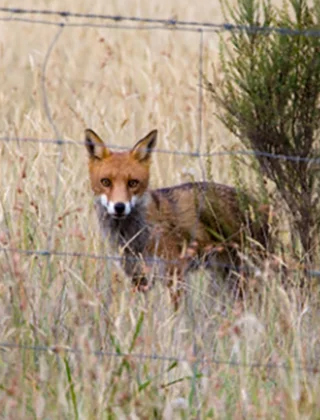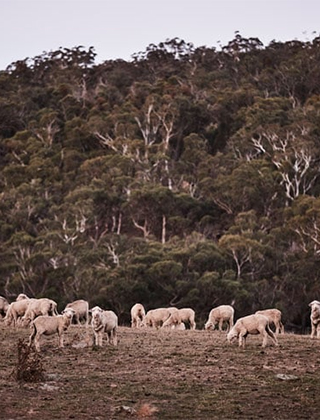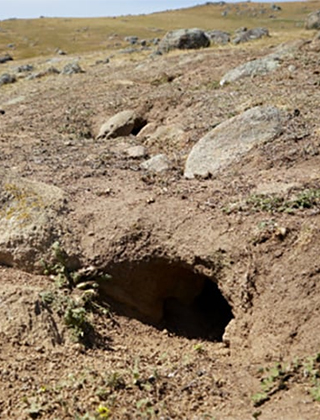Get the timing of RHDV release right to manage rabbits

Land managers planning to release the rabbit haemorrhagic disease virus (RHDV) are being urged to follow proven advice and time their release of the biocontrol only when rabbits are not breeding and young rabbits are not present. This is because young rabbits are resistant to RHDV and when infected develop immunity. This likely makes the rabbit population harder to control in future.
PHOTO: John Schilling
Land managers planning to release the rabbit haemorrhagic disease virus (RHDV) are being urged to follow proven advice and time their release of the biocontrol only when rabbits are not breeding and young rabbits are not present. This is because young rabbits are resistant to RHDV and when infected develop immunity. This likely makes the rabbit population harder to control in future.
Infesting two-thirds of Australia, and almost all wool-growing regions, rabbits are Australia’s most widespread and destructive agricultural and environmental vertebrate pest.
Since 1997, RHDV has been available to eligible land managers for intentional local release to help them control rabbits. The recommended guidelines state that RHDV should not be released when young rabbits are present in the population; this means that the virus should not be released when rabbits are breeding or for up to 10 weeks post the end of rabbit breeding.
However, new research published in the journal Conservation Science and Practice shows that half to three quarters of land managers have likely released RHDV at the wrong time of year, when young rabbits are present.
NSW Department of Primary Industries (DPI) research scientist, Patrick Taggart, who led the new research, says land managers irrespective of their position (private, government, other) must get the timing of release right or risk losing a valuable tool to protect agricultural land, endangered native species and the environment from rabbits.
“Unless a landholder can be certain that young rabbits are not present in the population, they should strongly avoid releasing the virus between July and December. The virus should be released at the end of summer/start of autumn when there is no/little green grass around and rabbit are unlikely to be breeding.”
Dr Patrick Taggart, NSW DPI
“Releasing RHDV when young rabbits are present is not advised as the practice could exacerbate Australia’s rabbit problem,” Dr Taggart said.
“RHDV should be released only when young rabbits are not present, as rabbits under ten weeks old are resistant to RHDV and once infected they are likely to recover and become immune for life. When these immune rabbits breed, their immunity is temporarily passed to their offspring, which we expect will make it harder to control rabbit populations in the future.
“Using RHDV at the wrong time potentially increases, rather than decreases, rabbit numbers and risks the effectiveness of future efforts to control this invasive pest.”
RHDV is manufactured and sold by NSW DPI’s Elizabeth Macarthur Agricultural Institute, which has long-advised that RHDV should be released only when young rabbits are not present. In most years, rabbits breed continuously between May and October and young rabbits are likely to be ever-present between July and December. Therefore, as a general rule of thumb, across southern agricultural Australia, RHDV should not be released between July and December. Optimal time of release is generally considered to be end of summer or start of autumn (February, March, April), before any major autumn rainfall that may kickstart rabbit breeding.
RHDV should not be released between July and December unless land managers are confident rabbits are not breeding and young rabbits are not present. Generally, this is only the case during especially dry seasons.
Legislation governing who is permitted to use RHDV varies between Australian states and territories.
While biological control of rabbits can be very effective at reducing rabbit numbers, biological control alone is not enough to manage rabbits. It is important to apply and integrate several control methods in addition to biocontrol, such as the removal of warrens or above-ground harbor, poison baiting, warren fumigation, or other similar rabbit management techniques. In most situations, no single method will provide adequate control of rabbits in the long term.
More information:
- For more information on the supply and correct application of RHDV, head to the PestSmart website. The PestSmart website also contains a 24-page Glovebox Guide for Managing Rabbits developed with AWI support, and other useful rabbit control information.
- To read the new study published in Conservation Science and Practice, a journal of the Society for Conservation Biology, head to doi.org/10.1111/csp2.12639
This article appeared in the June 2022 edition of AWI’s Beyond the Bale magazine. Reproduction of the article is encouraged.















